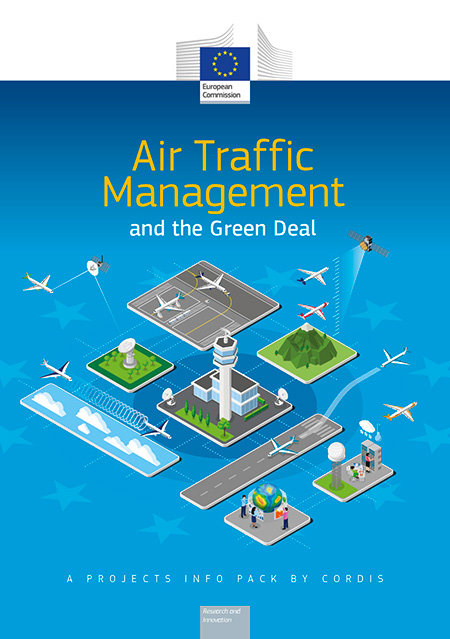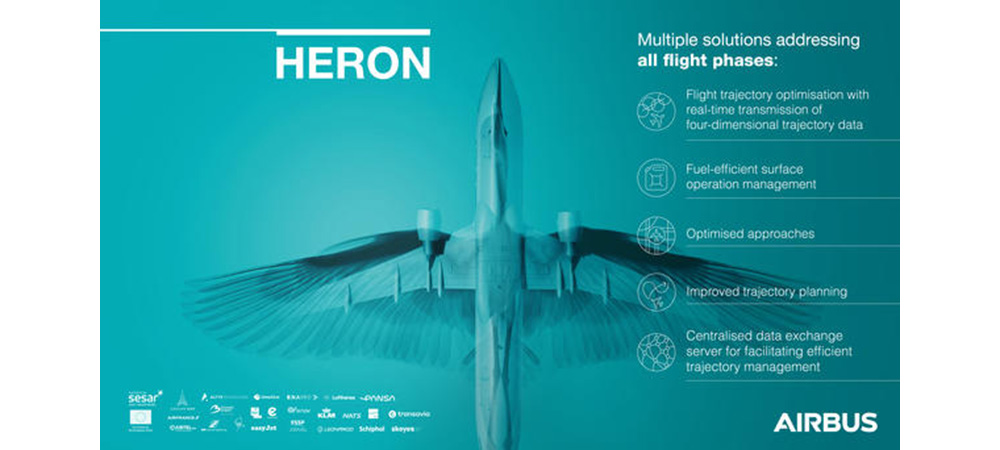Climate change will shape many aspects of citizens' lives in the 21st century and beyond. Major ATM changes, in the way energy is used or wasted, are required to limit global warming and its environmental and social impacts. The HERON project aims to foster deployment of a set of ambitious targets to mitigate CO2 emissions from air transport and offer mitigation through the development of meaningful and sustainable activities including more efficient aircraft operations both in the air and on the ground.

Digital sky demonstrator PROJECT
Highly Efficient Green Operations (HERON)
In short

|
|
|---|---|
|
PROJECT ID
|
HERON
|
|
PROJECT TYPE
|
Digital sky demonstrator |
|
FLAGSHIP
|
Aviation green deal
|
|
STATUS
|
Ongoing |
|
SESAR PROGRAMME
|
Digital European Sky
|
|
PROJECT DURATION
|
2022-11-01 > 2025-10-31 |
|
TOTAL COST
|
40,370,827
|
|
EU CONTR.
|
18,108,094
|
|
GRANT ID
|
101079472
|
|
PARTICIPANTS
|
Airbus, ADP, Air France, Airtel Atn , Altys Technologies, Brussels Airport, Deep Blue, DFS Deutsche Flugsicherung , Direction Des Services De La Navigation Aerienne (DSNA), EasyJet Europe, Enaire, Enav, Eurocontrol, European Satellite Services Provider (ESSP), Iga Havalimani Isletmesi Anonim Sirketi, KLM, Leonardo, Lufthansa, NATS, PANSA, Schiphol Nederland, SKEYES, Transavia France |
Arising advanced and digital technology paves the way for optimised operations and is a key enabler to support sustainable aviation. Within the scope of this project, airborne platforms will be fitted with advanced technologies and exposed on revenue flights.
Participating ANSPs will develop new and optimized approaches procedures, demonstrate Air Ground coordination Trajectory Based Operations (TBO) in the planning and execution phases.
The current ATM environment based on static flight plans is evolving towards TBO in order to improve Airports and ATM Network performance.
In the execution phase, major elements to feed an accurate and reliable trajectory prediction can be provided by the aircraft itself and shared in real time. The HERON project will allow to reduce flight delays, fuel burn and CO2 emissions via enabling continuous descent operation, reducing undue vectoring and optimizing trajectories.
Demonstrations will cover mainline aircraft with Airbus and Boeing aircraft operators (at least 6 airlines), 5 Airports, 8 ANSPs, 7 type of operations covered (Increased Glide Slope - IGS, Required Navigation Performance - Authorization Required - RNP AR, Second Runway Aiming Point - SRAP, Flight and Flow Information for a Collaborative Environment - FF-ICE, Trajectory Based Operations in 4 Dimensions - TBO 4D, Continuous Descent Approach Dynamic Route Availability Document - CDA dynamic RAD), several months of application, more than 1000 flights collected, for efficient trans-European aviation, paving the way to EU climate neutrality and zero pollution ambition by 2050.




